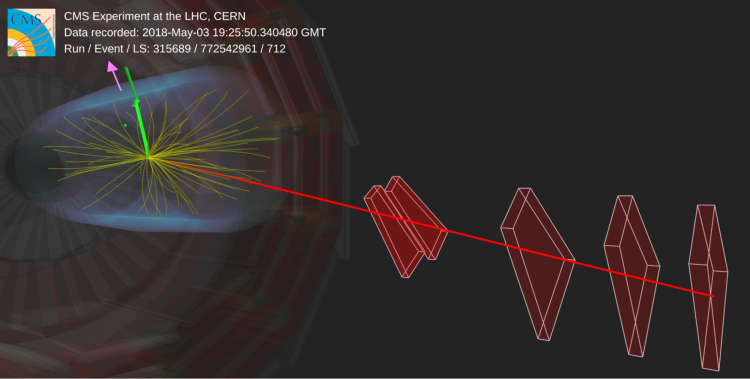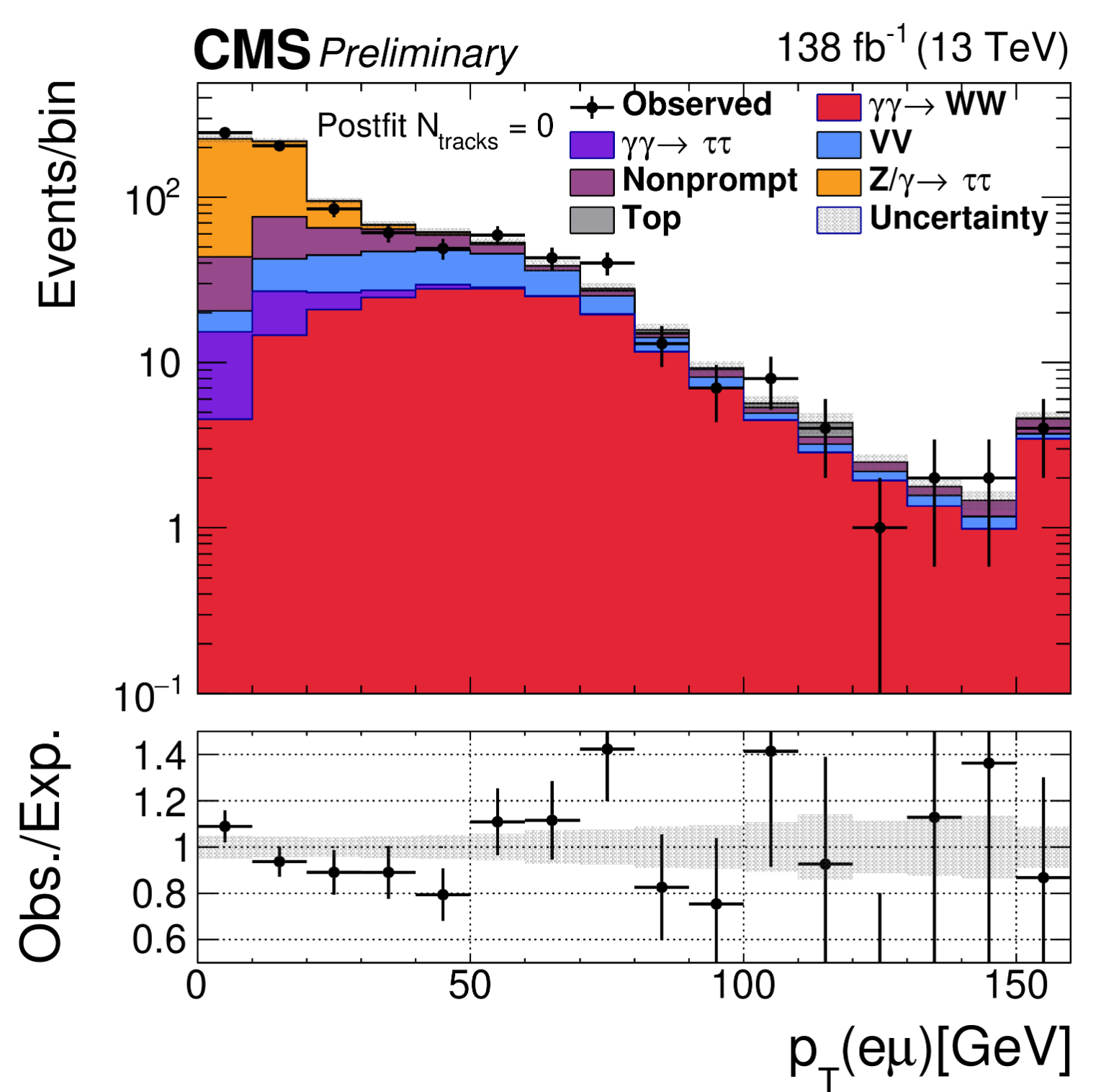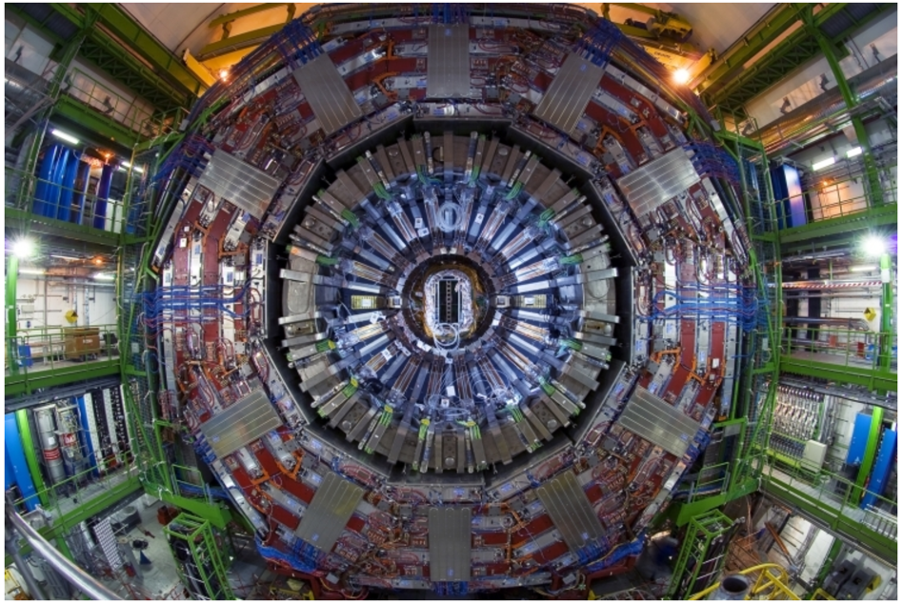
Turning the LHC into a photon collider, the CMS experiment observes for the first time how two photons fuse and convert into two W bosons. Stringent limits are set on parameters that would describe possible deviations from the standard model.
At the Large Hadron Collider (LHC), when two trains of protons pass each other at almost the speed of light, they generate intense electromagnetic fields. These can lead to the emission of photons, particles of light, from the proton beam. The photons can subsequently collide and produce other particles. Processes like this are expected to proceed via the electroweak interaction and their experimental observation is a direct test of the standard model of particle physics. In 2024, the CMS Collaboration observed the production of a pair of taus, the heaviest lepton, in such photon-photon collisions. Now, in a recent result, CMS has measured the production rate of a pair of W bosons.

Above: three possibilities of photon-photon fusion, producing a pair of W bosons in proton-proton collisions: both protons stay intact (left); one proton dissociates (middle); and both protons dissociate (right).
Photon-photon fusion differs substantially from head-on proton-proton collisions. During this process, the protons do not interact with each other via the strong interaction – instead, as the sketches in the figure above indicate, they stay well separated, and either remain intact or dissociate to a low mass final state that goes in the forward direction.
The final state particles in the central detector, here the W bosons, are produced exclusively, i.e. there are no other particles from the same collision. The detection of such exclusive events is still quite challenging due to the interaction of other protons in the beam (pileup).
To ensure a clean sample, we study fully leptonic WW events in the final state with just one electron and one muon. The analysis exploits the exclusive signature of photon-photon fusion by requiring the absence of additional tracks associated with the vertex formed by the electron and the muon. This enables us to measure the rate at which pairs of W bosons are produced in photon-photon fusion.
A key variable to separate the signal from the background is the vector sum of the transverse momentum of the muon and the electron. The distribution of this characteristic transverse momentum is shown in the figure below. The results are in agreement with the standard model prediction within the current precision.

Above: Distribution of a characteristic transverse momentum (vector sum for muon and electron, each from the decay of one of the W bosons) in the event. The data, shown with black markers, is consistent with the standard model predictions, shown with the coloured histograms.
The process is also a good probe for new physics beyond the standard model. If new particles exist at higher energies, some of their effects might be visible at lower energies. The framework of “Effective Field Theory” utilizes this idea, and adds additional parameters to characterize these effects. Constraining the values of these parameters is crucial in the search and understanding of theories beyond the standard model.
In this analysis, some of the parameters are constrained for the first time. For some others, the analysis obtains the most stringent limits to date.
The result represents a significant step forward in the pursuit of precision. “It is truly exciting to see the bosons mediating the weak interaction born from the fusion of their counterparts for the electromagnetic interaction, and set some of the best bounds on parameters characterizing new physics beyond the standard model," said Zongsheng He, a Ph.D student at Peking University from the analysis team.
Written by: Zongsheng He, for the CMS Collaboration
Edited by: Muhammad Ansar Iqbal
Read more about these results:
-
CMS Physics Analysis Summary (SMP-24-019): "Measurement of the photon-fusion production cross section of a pair of W bosons"
-
@CMSExperiment on social media: Bluesky - Facebook - Instagram - LinkedIn - TikTok - Twitter/X - YouTube

